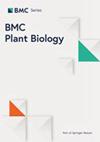β-glucans, SAM, and GSH fluctuations in barley anther tissue culture conditions affect regenerants’ DNA methylation and GPRE
IF 4.3
2区 生物学
Q1 PLANT SCIENCES
引用次数: 0
Abstract
Microspore embryogenesis is a process that produces doubled haploids in tissue culture environments and is widely used in cereal plants. The efficient production of green regenerants requires stresses that could be sensed at the level of glycolysis, followed by the Krebs cycle and electron transfer chain. The latter can be affected by Cu(II) ion concentration in the induction media acting as cofactors of biochemical reactions, indirectly influencing the production of glutathione (GSH) and S-adenosyl-L-methionine (SAM) and thereby affecting epigenetic mechanisms involving DNA methylation (demethylation—DM, de novo methylation—DNM). The conclusions mentioned were acquired from research on triticale regenerants, but there is no similar research on barley. In this way, the study looks at how DNM, DM, Cu(II), SAM, GSH, and β-glucan affect the ability of green plant regeneration efficiency (GPRE). The experiment involved spring barley regenerants obtained through anther culture. Nine variants (trials) of induction media were created by adding copper (CuSO4: 0.1; 5; 10 µM) and silver salts (AgNO3: 0; 10; 60 µM), with varying incubation times for the anthers (21, 28, and 35 days). Changes in DNA methylation were estimated using the DArTseqMet molecular marker method, which also detects cytosine methylation. Phenotype variability in β-glucans, SAM and GSH induced by the nutrient treatments was assessed using tentative assignments based on the Attenuated Total Reflectance-Fourier Transform Infrared (ATR-FTIR) spectroscopy. The effectiveness of green plant regeneration ranged from 0.1 to 2.91 plants per 100 plated anthers. The level of demethylation ranged from 7.61 to 32.29, while de novo methylation reached values ranging from 6.83 to 32.27. The paper demonstrates that the samples from specific in vitro conditions (trials) formed tight groups linked to the factors contributing to the two main components responsible for 55.05% of the variance (to the first component DNM, DM, to the second component GSH, β-glucans, Cu(II), GPRE). We can conclude that in vitro tissue culture conditions affect biochemical levels, DNA methylation changes, and GPRE. Increasing Cu(II) concentration in the IM impacts the metabolism and DNA methylation, elevating GPRE. Thus, changing Cu(II) concentration in the IM is fair to expect to boost GPRE.大麦花药组织培养条件中的β-葡聚糖、SAM 和 GSH 波动会影响再生体的 DNA 甲基化和 GPRE
小孢子胚胎发生是一种在组织培养环境中产生加倍单倍体的过程,广泛应用于谷类植物。高效生产绿色再生体需要在糖酵解水平上感应到压力,然后是克雷布斯循环和电子传递链。后者会受到诱导培养基中作为生化反应辅助因子的 Cu(II)离子浓度的影响,间接影响谷胱甘肽(GSH)和 S-腺苷-L-蛋氨酸(SAM)的生成,进而影响涉及 DNA 甲基化(去甲基化-DM、新生甲基化-DNM)的表观遗传机制。上述结论是通过对三叶草再生植物的研究得出的,但对大麦还没有类似的研究。因此,本研究探讨了 DNM、DM、Cu(II)、SAM、GSH 和 β-葡聚糖如何影响绿色植物再生效率(GPRE)的能力。实验涉及通过花药培养获得的春大麦再生体。通过添加铜盐(CuSO4:0.1;5;10 µM)和银盐(AgNO3:0;10;60 µM)创建了九种诱导培养基(试验),花药的培养时间各不相同(21、28 和 35 天)。使用 DArTseqMet 分子标记法估算 DNA 甲基化的变化,该方法也可检测胞嘧啶甲基化。根据衰减全反射-傅立叶变换红外光谱法(ATR-FTIR),对营养素处理诱导的β-葡聚糖、SAM和GSH的表型变化进行了初步评估。绿色植株的再生效果范围为每 100 个电镀花药 0.1 至 2.91 个植株。去甲基化水平从 7.61 到 32.29 不等,而新甲基化水平则从 6.83 到 32.27 不等。论文表明,来自特定体外条件(试验)的样本形成了紧密的群体,这些群体与造成 55.05% 方差的两个主要成分(第一成分 DNM、DM,第二成分 GSH、β-葡聚糖、Cu(II)、GPRE)的因素有关。我们可以得出结论,体外组织培养条件会影响生化水平、DNA 甲基化变化和 GPRE。提高 IM 中 Cu(II) 的浓度会影响新陈代谢和 DNA 甲基化,从而提高 GPRE。因此,改变 IM 中的铜(II)浓度可以提高 GPRE。
本文章由计算机程序翻译,如有差异,请以英文原文为准。
求助全文
约1分钟内获得全文
求助全文
来源期刊

BMC Plant Biology
生物-植物科学
CiteScore
8.40
自引率
3.80%
发文量
539
审稿时长
3.8 months
期刊介绍:
BMC Plant Biology is an open access, peer-reviewed journal that considers articles on all aspects of plant biology, including molecular, cellular, tissue, organ and whole organism research.
 求助内容:
求助内容: 应助结果提醒方式:
应助结果提醒方式:


